agriculture
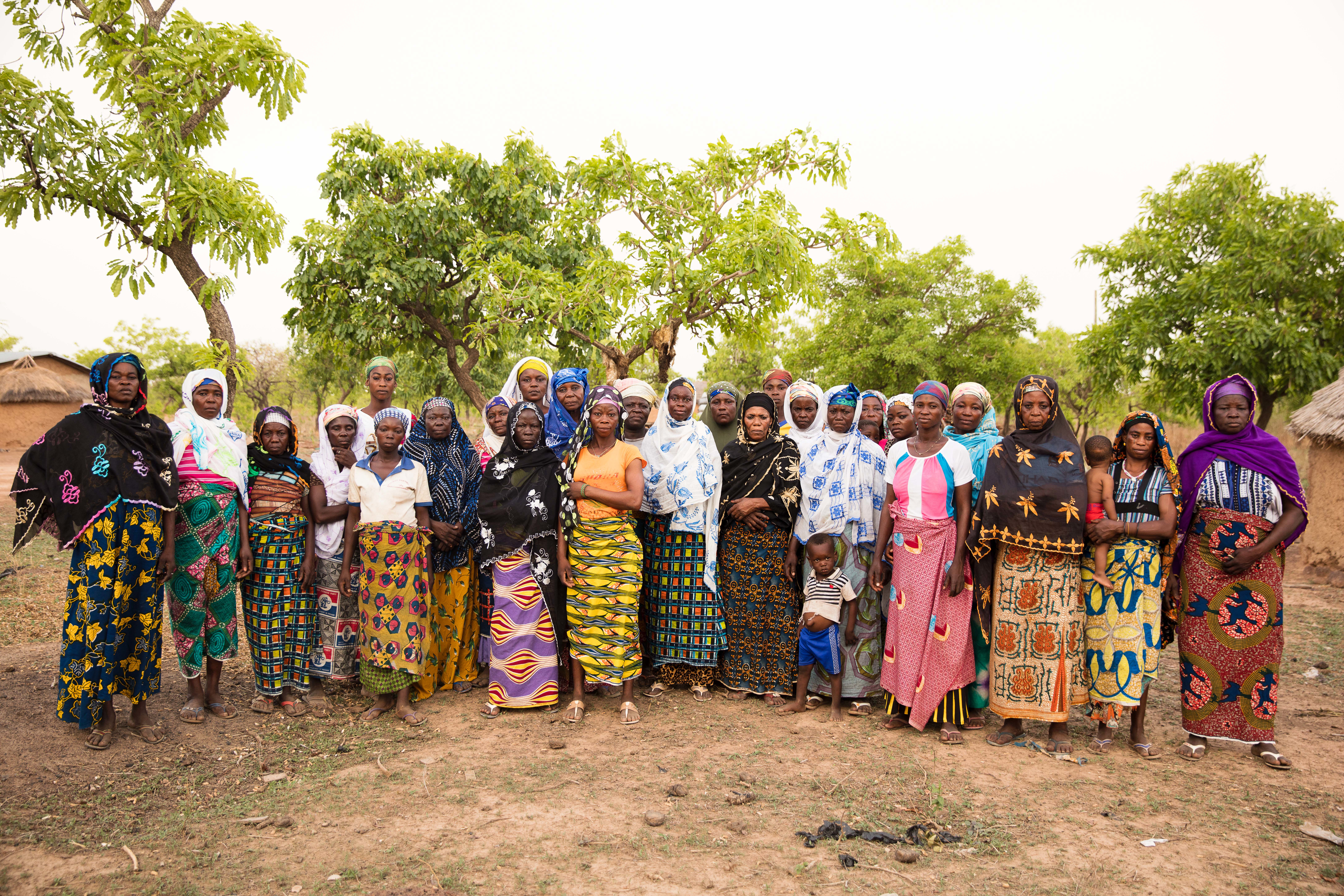
Food and forests: We can have them both
Agriculture provides most of the world’s food. It also contributes the most to global deforestation.![]() This does not mean, however, that we need to choose between feeding a rapidly growing population and protecting the forests that are so essential to our wellbeing.
This does not mean, however, that we need to choose between feeding a rapidly growing population and protecting the forests that are so essential to our wellbeing.
While many countries have first depleted their forests before seeing a rebound in tree cover, this “business-as-usual” scenario is not inevitable.![]() But changing it does require a paradigm shift. In part, it means redefining what “successful” pathways to sustainable development look like, so that they resonate with local leaders and reflect local realities – and thus gain political support. In addition, transitioning away from the status quo depends on forming new and creative partnerships between companies, communities, governments, and investors.
But changing it does require a paradigm shift. In part, it means redefining what “successful” pathways to sustainable development look like, so that they resonate with local leaders and reflect local realities – and thus gain political support. In addition, transitioning away from the status quo depends on forming new and creative partnerships between companies, communities, governments, and investors.
How to bring about this new food-and-forest paradigm? An ongoing study - funded by the Program on Forests (PROFOR) and led by the World Bank's Agriculture and Environment Global Practices along with experts from many agricultural and environmental organizations - is trying to find concrete answers. The team is focusing on six agricultural commodities: three that are heavily implicated in deforestation activities (palm oil, soy and beef), and three that could include planting trees in their cultivation (cocoa, coffee and shea butter). In an initial synthesis study, the researchers draw out some key lessons for removing deforestation from agricultural supply chains sooner rather than later, and for increasing the planting of trees in agricultural lands. Here are just six of their takeaways:
- Success starts with the farmer. There are many agricultural practices which, if implemented at scale, can benefit crop yields while slowing deforestation or increasing tree cover. Not only must farmers be fully equipped with this information, but they should be consulted and supported in making the transition to sustainable production systems.
- It is important to recognize and reward innovators. A system based entirely on punishing those who contribute to deforestation is unlikely to be effective in the long run. A more promising approach is to reward farmers who use creative, forest-friendly practices, while widely promoting the monetary and ecosystem benefits of these methods.
- Corporations’ sustainability pledges are important but not sufficient. A new and promising trend is the emergence of technical, commercial, and financial partnerships between companies, farmers, communities, and regional authorities.
- Government policies and programs need to be updated. In many cases, existing regulations prevent farmers from harvesting and marketing trees, deterring them from planting trees in agricultural landscapes. Ministries of agriculture and of environment need to work together to revise these legal frameworks so that farmers can sustainably grow and harvest trees on their lands.
- Regional action is critical. Efforts to combat deforestation in the agricultural sector sometimes fail because supply chains transcend national boundaries. Large-scale transformation is possible, but it needs to be backed-up by multi-stakeholder processes that lay out a shared vision for a region.
- The costs of forest loss need to be communicated more clearly. Forest conservation is often viewed through the lens of foregone agricultural profits. Governments should do a better job of communicating why forests are so crucial. For instance, improved management of shea trees in Sahelian countries could strengthen economic returns and ecological stability, with possible knock-on benefits like sustained income generation, jobs for women and youth, and lower incidence of conflict and migration induced by poor access to natural resources.
Initial findings from the synthesis study, “Leveraging agricultural value chains to enhance tropical tree cover and slow deforestation (LEAVES),” will be shared at the Global Landscapes Forum (GLF): The Investment Case in Washington, D.C. on May 30th. Its authors hope to start building momentum for their new approach to productive and sustainable agriculture.
“Although the private sector has been the main driver behind sustainability initiatives like Brazil’s Soy Moratorium and Cattle Agreement, support from the World Bank was instrumental,” said Dora Nsuwa Cudjoe, Senior Environmental Specialist, and Co-Task Team Leader of the LEAVES knowledge product at the World Bank. “The Bank can show the same level of engagement in the agroforestry commodities like coffee, cocoa, and shea, to help scale up private sector efforts. The opportunity is here.”
Photo: Josephhunwick.com
For stories and updates on related activities, follow us on twitter and facebook , or subscribe to our mailing list for regular updates.
Last Updated : 06-16-2024
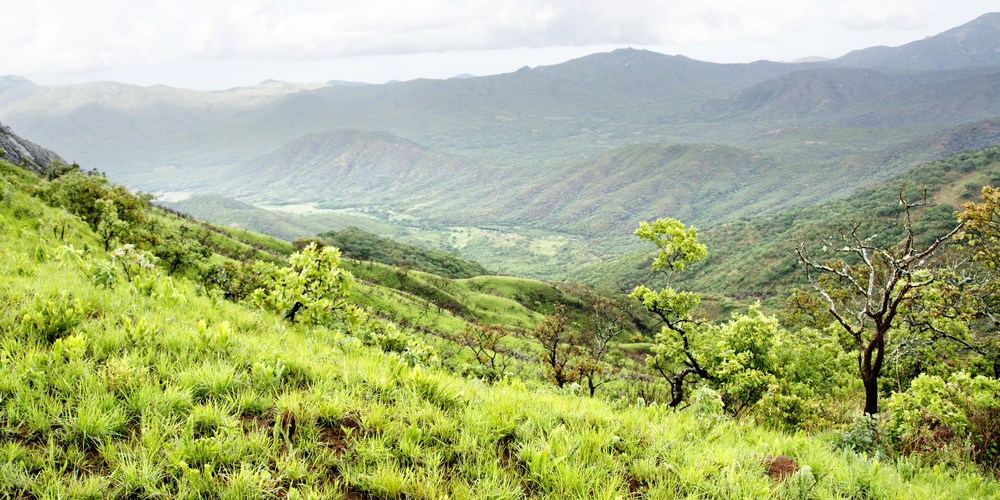
When thinking of forests, don’t forget the value of trees
Across the globe, demand for wood products is increasing and expected to quadruple by 2050. This trend is exacerbating deforestation and forest degradation. But it also presents an opportunity for a better approach to farming and managing forests.
A new report, Harnessing the Potential of Private Sector Engagement in Productive Forests for Green Growth, shows how sustainably harvesting wood products can help meet growing demand while providing jobs, mitigating climate change and conserving primary forests.
While it’s well known that trees and forests provide an important carbon sink, the carbon stored in forest products is often overlooked. Forest products and materials such as those used for construction and furniture store carbon for decades and even centuries.
Choosing wood products over other non-renewable materials, such as concrete and steel for construction materials, also offers climate benefits. Concrete and steel require fossil fuel to produce, making these alternatives much more carbon intensive. For example, producing a concrete wall puts 15 times more carbon dioxide into the atmosphere than making a wooden one.
The new report, funded by the Climate Investment Funds (CIF) and the Program on Forests (PROFOR), examined the economies of six countries - Ethiopia, Colombia, Mexico, Mozambique, Peru and Vietnam - to estimate the potential climate mitigation benefits from forest-based supply chains. Together, the six countries could sequester more than 150 million tons of CO2e (see table below) by 2030 with adequate investments in forest restoration and the increased production and use of wood products. Such an approach could help countries meet their climate commitments under the Paris Climate Agreement.
Investing in wood supply to meet demand through landscape restoration and other means also brings benefits, especially by creating new forest industry jobs in rural areas. Potential employment benefits in the six countries studied are depicted in the table below. In addition, projected demand for wood products could encourage the private sector to make long-term investments in productive forests, plantations, and wood processing.
Moving forward on sustainably harvesting forests is a delicate balance between production and conservation. If promoting forest products leads to deforestation, then climate mitigation is lost. To get the balance right, governments must create an enabling environment through better law enforcement and governance. That would help to protect and more sustainability use forests, improve land tenure, and provide the incentive mechanisms to attract private sector investments. Plantations will be key for renewable energy - sustainable charcoal and wood chips - in the future. Private investors, rural communities and forest owners also need technical assistance to help with forest management and production, as well as easier and quicker access to market information.
“Investing in sustainably managing and using forests offers longer-term benefits over the frequently under-productive and disorganized use of many forests today,” says Gerhard Dieterle, program manager for the World Bank’s Forest Investment Program. “As found in this study, doing so would unquestionably benefit people and the planet.”
Click here to watch the video on the interview with the authors.
For stories and updates on related activities, follow us on twitter and facebook , or subscribe to our mailing list for regular updates.
Last Updated : 06-16-2024
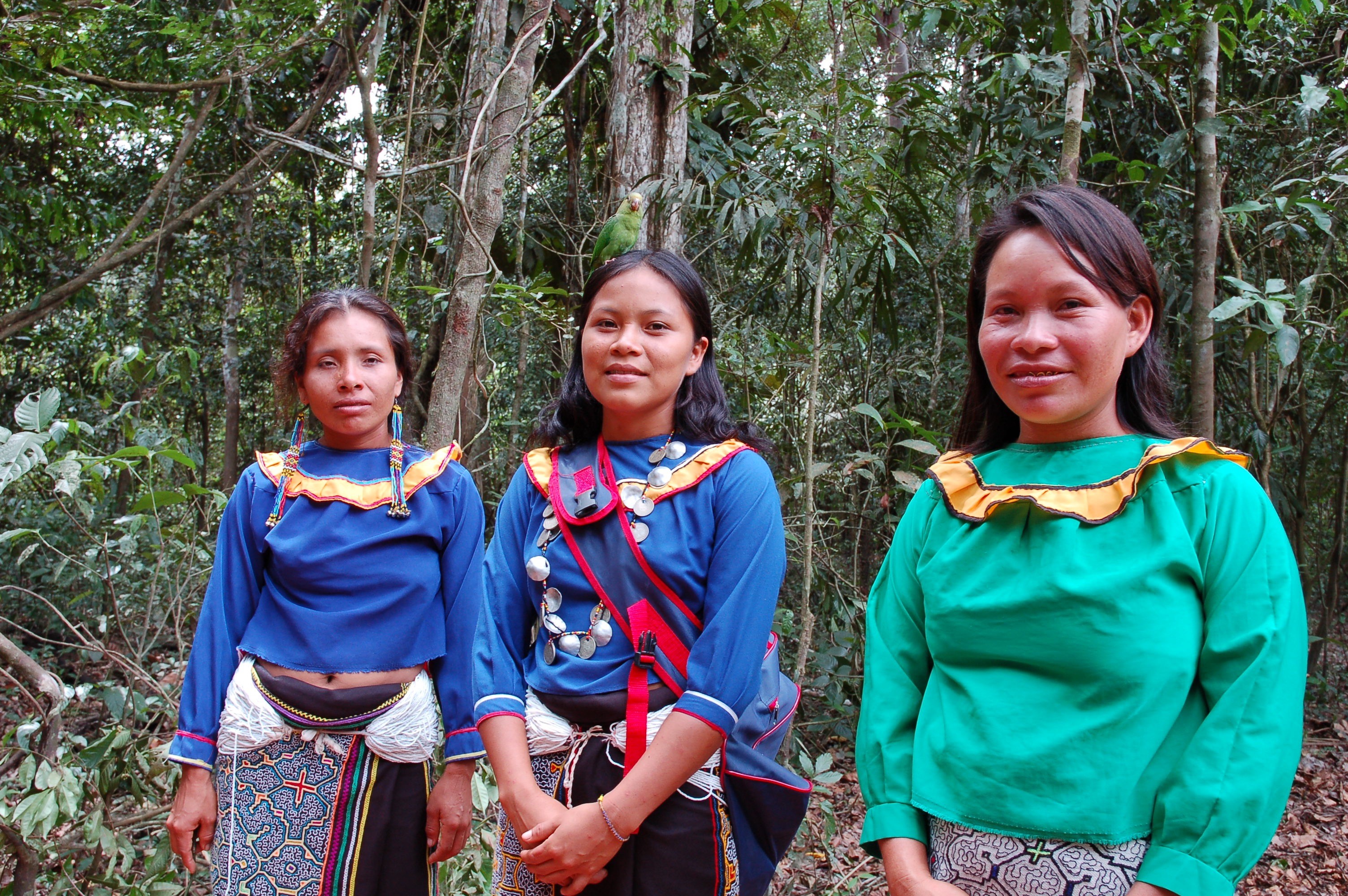
Resolving forest tenure is key to promoting sustainable development and human rights
Imagine that you’re standing in a forest. Far below your feet, there could be valuable oil or mineral deposits that are probably owned by a national government. The soil that you’re standing on belongs to whoever holds a title to that land – an individual, a corporation, a community, or a local or federal authority. But who owns the trees?
In Latin America the answer to that question is, increasingly, indigenous peoples and local communities. “There was a spike in the trend of transferring access and control of forest resources from governments to indigenous communities,” said Gerardo Segura Warnholtz, Sr. Natural Resources Management Specialist and author of a new, PROFOR-supported book on forest tenure regimes in Latin America. “These changes were driven by governments realizing that they don’t have the capacity to adequately manage forests, and by the demands of local communities advocating for forest rights.”
Worldwide, secure land and forest tenure is gaining recognition as a key component of many sustainable development efforts, from promoting economic growth, to conserving biodiversity and reducing carbon emissions, to protecting human rights. “Tenure is seen more and more as a common denominator across several sectors, including agriculture, rural poverty, and climate change initiatives like REDD+ that depend on clarifying ownership of carbon,” Segura said.
Encouragingly, studies have shown that, where communities have strong forest rights and sufficient government support, deforestation rates (and associated carbon emissions) are much lower compared to areas outside community forests. This is crucial from a climate change perspective, as an estimated 25 percent of all carbon stored aboveground in tropical forests is being collectively managed by indigenous people and local communities.
However, many indigenous peoples are part of tenure systems that lack sufficient legal standing, and individuals may face severe challenges in exercising political power. “We are talking about basic human rights,” Segura emphasized. “It’s especially important to remember that most forested lands are, or have been, inhabited by local communities, many of whom have been marginalized.”
Consequently, Latin America’s recent efforts to reform forest tenure regimes are a crucial step in the right direction. But do they go far enough? Segura and his research team used the “bundle of rights” concept to analyze 10 tenure systems in six different Latin American countries: Argentina, Colombia, El Salvador, Honduras, Nicaragua and Peru. Of the 10 systems, the team found that seven meet all of the requirements for a full bundle of rights, meaning that communities on these lands were entitled to access forests and exclude others from doing so; use and manage forest resources at their discretion; challenge a government’s decision to infringe on these rights; and hold these rights indefinitely.
That said, many countries have yet to fully implement these legal frameworks. In Peru, for instance, land titling initiatives have moved slowly, and have concentrated on the Amazon region, where local and national activism efforts have been the strongest. Across all of the countries analyzed, limited institutional, technical and financial capacity poses obstacles to comprehensive forest tenure reform.
In addition, three regimes in Segura’s analysis maintain some restrictions on the bundle of rights, while El Salvador has yet to reestablish collective land ownership since it was abolished in the late 1800s. The country also only recognized the legal status of indigenous minorities in 2014. “El Salvador is the outlier in this study, but in a general way it acts as a good illustration of what happens when we don’t act,” explained Segura. “El Salvador lost most of its forest a long time ago, and its agricultural economy is on the verge of collapse. We are seeing so many threats to forests around the world - if we’re not more careful about forest management, the consequences could be devastating.”
Segura’s hopes that, with the publication of his new book and ongoing PROFOR work to consolidate and promote understanding and best practices around forest tenure reform, governments and development institutions will be convinced that undertaking forest tenure reform is well worth the risk.
“This topic is seen as so complicated, risky and contagious,” he said. “How can we de-risk it? We need to translate the knowledge we have into tools that are directly useful to practitioners. Governments need to keep devolving rights to communities, as well as establishing and enforcing management rules in a transparent and inclusive way. If we can achieve that, there will be positive outcomes for conservation and for development.”
For stories and updates on related activities, follow us on twitter and facebook , or subscribe to our mailing list for regular updates.
Last Updated : 06-16-2024
It’s time to get smart about sustainable forests. Here’s how.
It isn’t just our technology that cries out for “smart” solutions. The development challenges of an increasingly connected world demand ever more comprehensive answers – and forests are no exception. The risks to forested lands stem from multiple sources, from the development of mining and road infrastructure, to expanding agricultural production, to the growing demand for woodfuels. To address these challenges in a sustainable manner, we need to partner with leaders and stakeholders in other sectors to develop solutions that minimize or avoid damaging effects and enhance forests’ contribution to environmental, economic and social benefits. In short, we need solutions that are “forest-smart.”
To make these objectives a reality, PROFOR continues to develop a forest-smart approach that emphasizes the role of forests within a broader landscape, where changes in forest cover can have very real and wide-reaching impacts on people and their wellbeing. We are partnering with experts outside of the forestry realm, including mining, disaster risk management, energy and agriculture, to help turn these sectors into forest champions. PROFOR’s ultimate goal is to transform how other sectors operate by identifying opportunities for mutual benefit, and devising innovative solutions that benefit people and the environment, and can be carried out at a large scale.
For instance, green infrastructure like mangrove forests can act as a buffer against storms, flooding, and coastal erosion – and unlike traditional “gray infrastructure” like sea walls and levies, mangroves provide valuable fish habitats, which translates into benefits for fisheries, tourism and local jobs. In Jamaica, PROFOR-supported work on nature-based infrastructure is guiding national planning for managing risks from natural disasters.
The extractive industries are another area where we can get smarter. The footprint from mining operations and their related infrastructure (such as constructing roads and settlements) can be devastating to forests, biodiversity, and forest-dependent communities. However, an array of new tools has emerged on ways to minimize or offset these negative impacts. PROFOR’s forest-smart mining program is building understanding for how to apply these new practices across a range of different contexts.
Agriculture, too, presents forest-smart opportunities. PROFOR research highlighted the many benefits of growing trees on farms, including boosting productivity, supplementing household incomes, and sequestering greenhouse gases. Especially promising is the tremendous potential for applying these tree-based practices at the national level.
While all of PROFOR’s forest-smart programs have implications for reducing poverty, PROFOR has also identified ‘poverty’ as a core thematic concern when it comes to sustainable forests. While there is growing evidence on forests’ contribution to the livelihoods and subsistence of poor communities, much less is known about the extent to which forests can provide a pathway out of poverty. To help fill this knowledge gap and make the case for forests as tool against poverty, PROFOR is collaborating with an ongoing household survey initiative to collect nationally representative data. PROFOR is also strengthening its focus on gender, contributing to more inclusive projects that take into account the different ways in which men and women access, use, and manage forests.
In essence, forest-smart strategies deliver benefits for the climate as well as for development. These strategies are increasingly in demand as countries face multiple competing pressures on their resources and lands, and the magnitude of climate change risks become more and more apparent. To build the necessary resilience to face these challenges, we can’t afford to be anything less than forest-smart.
For stories and updates on related activities, follow us on twitter and facebook , or subscribe to our mailing list for regular updates.
Last Updated : 06-16-2024
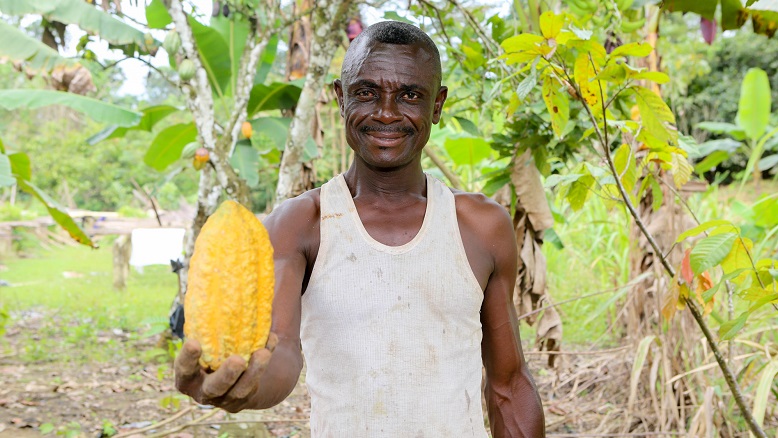
Cutting Deforestation Out of the Cocoa Supply Chain
This story was originally posted by the World Bank.
STORY HIGHLIGHTS
- In West Africa, cocoa has been identified as a major driver of deforestation which has led to serious soil degradation, water insecurity and crop failures in the region.
- To address these issues, governments and the private sector are becoming increasingly active on sustainability in the cocoa industry.
- A new report describes overarching principles and key strategies that these stakeholders can implement to lay the groundwork for deforestation-free production in the cocoa sector.
A new report presents a first set of principles for achieving sustainable, deforestation-free cocoa production. Eliminating Deforestation from the Cocoa Supply Chain analyzes current sustainability projects and best practices in the cocoa sector and makes the business case for moving toward deforestation-free production models.
While global cocoa production relies almost entirely on 5 – 6 million smallholders, the processing level in the cocoa value chain is highly concentrated among several traders, grinders and chocolate producers. Even though deforestation occurs at the smallholder level, it is the companies, governments, and service providing NGOs that need to work to change policies and practices because the farmers have limited financial means and technical capacity to make the needed changes on their own.
The report, released by the BioCarbon Fund and the Forest Carbon Partnership Facility (FCPF) together with the World Cocoa Foundation and Climate Focus, describes overarching principles and key strategies that these stakeholders can implement to lay the groundwork for deforestation-free production in the cocoa sector:
1. Protection of natural primary and secondary forest: Companies can commit not to source cocoa associated with the deforestation of natural forest.
2. Legality: For producers and consumers, it is a priority to eliminate illegality within the cocoa supply chain.
3. Transparency: Companies, policy makers, and advocacy groups need to know who is driving deforestation and where.
4. Integration into long-term strategies: For the public sector, this means anchoring policies in long-term development strategies and legal frameworks. For the private sector, efforts that are supported at the CEO level and form an integral part of all operations will have the best success.
5. Operation at Scale: Larger-scale programs allow the establishment of incentives across a landscape, and economies of scale in information and extension services.
Agricultural expansion is a well-known driver of deforestation, and much has been written about the usual suspects — palm oil, soy, cattle and wood products — which alone are responsible for 40 percent of global deforestation per year. But recently, cocoa – the essential ingredient in the world’s chocolate – is also being scrutinized for its role in unsustainable land use practices.
There are several reasons for this. Cocoa grows best in forested – or formerly forested – areas. For many years, expanding production has encroached into and ultimately degraded forests to plant more cocoa trees. In West Africa in particular, cocoa has been identified as a major driver of deforestation which has led to serious soil degradation, water insecurity and crop failures in the region. This cocoa-related deforestation also affects biodiversity hotspots in Sub-Saharan Africa and Southeast Asia.
More than 90 percent of production comes from smallholder farms that depend on cocoa for their livelihoods. These small farmers and their families have to be part of the move to more sustainable methods, but they often face challenges in adopting better production practices: low yields from older trees, pests and diseases that target cocoa plants, difficulty obtaining farming supplies, and limited access to financing for those improvements.
To address these issues, governments and the private sector are becoming increasingly active on sustainability in the cocoa industry. In March, twelve of the world’s leading cocoa and chocolate companies, including Barry Callebaut, Mars, Mondelēz International and Olam, came together for the first time to set up a cooperative initiative to end deforestation and forest degradation in the global cocoa supply chain. Since then, additional companies have joined and more than 30 are committed to the effort.
In recent years, the World Bank Group has also been active in the sustainable cocoa dialogue, especially in Ghana and Côte d’Ivoire where cocoa is a major driver of deforestation. In 2014 –2015, the Bank Group worked with Ghana on a scenario planning exercise to inform a cocoa sector strategy revision. And through the FCPF, the Bank Group continues to help both Ghana and Cote d’Ivoire to develop large-scale emission reductions programs that aim to create incentives for more sustainable cocoa landscapes by paying for emission reductions, once they are verified. The Bank Group will also soon begin an analysis of the technical, financial and incentive barriers and opportunities to advance climate-smart cocoa at the farmer level, with funding from the Bank-hosted Program on Forests (PROFOR).
Through 2017, the World Cocoa Foundation and the leading cocoa producers will work to develop a global public-private framework of action to address deforestation in the cocoa supply chain. The FCPF will work in parallel to support the effort with analytical work and consultations. This framework is planned to be presented at the United Nations Climate Change conference in Bonn, Germany in November.
For stories and updates on related activities, follow us on twitter and facebook , or subscribe to our mailing list for regular updates.
Last Updated : 06-16-2024

Forest Resilience for the Southern Amazon: Managing the Agricultural Frontier
CHALLENGE
Due to climate change, the dry-season length has increased over southern Amazonia since 1979, resulting in a prolonged fire season. Major droughts in 2005 and 2010 significantly damaged the southern portion of the Amazon forest in Brazil and elevated fire-induced tree mortality in as much as 12% of the southeastern Amazon forests. These results suggest that feedbacks between fires and extreme climatic conditions could increase the likelihood of an Amazon forest “dieback” in the near-term. In addition, a recent study of human impacts on the integrity of the Amazon forest reported that a combination of selective logging and wildfires turns primary forests into a thick scrub full of smaller trees and vines, which not only stores 40% less carbon than undisturbed forests, but is also more susceptible to fires from adjacent farms and pasturelands than pristine forest. Forests are also under threat from the conversion to agriculture, particularly at the Cerrado margin, which has seen the largest expansion of medium and large farms, often linked to dynamic external markets.
APPROACH
The development objective of this proposal is to provide guidance to key local and national stakeholders on the design of policies and measures with the aim of maintaining the resilience of the southern Amazon forest in the face of climate change, increasing forest degradation, fire risks and associated greenhouse gas emissions, and increased global demand for agricultural commodities.
In the short-term, this activity will improve stakeholders involved in policy-making and implementation understanding of the dynamics between forests, agriculture and climate change, and resulting forest degradation and fire risks in a fragile frontier by key. In the medium term, it is expected to feed into the policy cycle by (i) establishing a sound set of potential impacts under different scenarios; and (ii) providing the basis for informed dialogue around increasing the resilience impact of policies and measures in the land use sector under the National Climate Change Policy.
The activity is composed of three tasks:
- Modeling of climate change, fire, forest degradation, and land use change dynamics in southern Amazonia. This will build on previous modeling work conducted by the World Bank in Brazil under the Low Carbon Country Case Study (Gouvello et al. 2010), namely SimBrasil and DINAMICA. The output will consist of a report outlining potential forest resilience impacts under different scenarios. The work will focus on the near to mid-term (2020) and complement the PROFOR supported study "Turn Down the Heat" that is focusing on medium- to long-term impacts (2030–2050).
- Policy options for managing the agricultural frontier. The output will include a report with recommendations resulting from the dialogue.
- Dissemination and knowledge exchange.
RESULTS
The simulations of future fire regimes indicate that the Southern Amazon is on the verge of a drastic tipping point from which the extent of areas burned in drought years may even double. This happens consistently in the four scenarios modeled after 2030, with and without deforestation. In other words, a temperature rise of just ≈1° relative to the current average (2010-2015) could trigger a series of large forest fires during the most severe droughts in the region. In those years, areas burned in the Southern Amazon could extend to over 3.6 million hectares, an increase of about 110% relative to the extent of the 2007 fires. In general, there is an increase in burned forest area from 17% to 41% after 2030 compared to 2002-2010. Although the results of the three models and four scenarios analyzed diverge from each other slightly, the trend is the same.
While the results of the simulations are inconclusive for years of normal rainfall, the advance of deforestation (at current rates) implies that an additional 7-16% of land will be burned between 2011-50 relative to scenarios with climate change alone. Although forest fragmentation plays an important role in facilitating fire spread, the results show that drought is the key determinant of the fire regime. This points to a virtually catastrophic effect of droughts powered by global warming, even in a scenario of robust climate change mitigation and a sharp reduction in deforestation rates.
In terms of geographic pattern, the southern Amazon is likely to be very heavily impacted, with some variation between the southeast and southwest depending on the different scenarios. In addition, high-intensity fires during droughts will be more extensive, implying higher mortality and consequent loss of forest biomass. From being a potential carbon sink, the Amazon forest will become a net source of carbon dioxide emissions, feeding back into global warming.
These dire warnings are crucial because they relate to an ecosystem of extremely high local, regional and global consequence. At the local and regional levels, fires in the Amazon are destroying valuable ecosystem services that communities depend on. The vast majority of agricultural production in Latin America depends on rain, meaning that disruptions to these systems will have profound negative impacts on livelihoods, jobs, health and nutrition, and wellbeing more generally. At the global level, it is very alarming that the Amazon forest may soon become a net emitter of carbon dioxide, rather than a potential carbon sink, contributing to climate change and further reducing the resilience of communities and ecosystems.
The final report identifies very feasible policy actions that can mitigate these negative impacts, including:
- Investing in fire prevention and firefighting capacity;
- Incentivizing alternative agricultual practices that are not based on fire; and
- Better land use planning to align agricultural producers and aggregators.
Implementing such policies is critical to conserving forests and biodiversity, ensuring the availability of ecosystem services and keeping people out of poverty, and ultimately to achieving global targets like the World Bank twin goals, the Sustainable Development Goals, and the Paris Climate Agreement.
For stories and updates on related activities, follow us on twitter and facebook , or subscribe to our mailing list for regular updates.
Last Updated : 06-15-2024
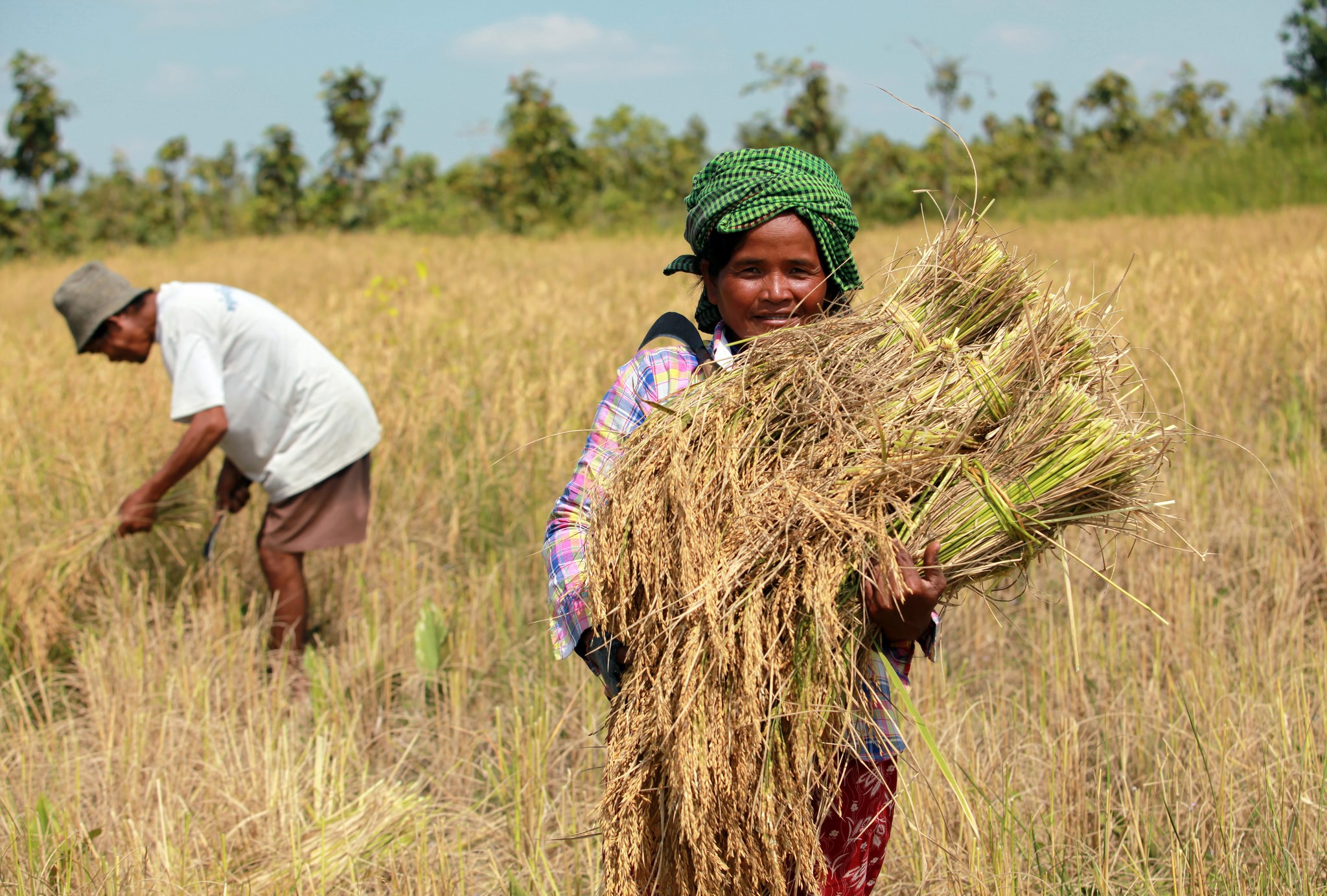
Share
Enhancing Capacity for Livelihoods Development in the Tonlé Sap and Cardamom Mountains Landscape in Cambodia
CHALLENGE
Over the last two decades, Cambodia achieved remarkable economic growth and graduated from a low- to a lower middle-income country. This growth has largely been driven by the country’s rich and diverse natural capital, which supports the livelihoods of millions of Cambodians but is rapidly being degraded from unsustainable use. For instance, agriculture - which is heavily dependent on natural resources and ecosystem services - contributed to 30 percent of GDP in 2015, and the livelihoods of more than five million people. However, according to official estimates, forest cover declined by 21 percent between 2006 and 2014, mainly due to the conversion of forests to agriculture or rubber plantations within economic land concessions.
To counter the rapid decline in forest area, the Royal Government of Cambodia has adopted several policies, strategies and plans to encourage improved forest use and protection. While these changes are positive, many institutional, information and investment challenges remain. In particular, more comprehensive cost-benefit analyses are needed to assess potential investments in sustainable livelihoods and ecosystem services. In addition, implementation of an integrated landscapes approach to forest programming requires strengthening institutional capacities at the national and subnational levels, as well as improving information and decision-support systems.
APPROACH
The key components of this activity will be:
- The development a national forest monitoring system. Efforts will be made to coordinate with complementary efforts by other development partners and NGOs, to bring together maps and data on forestry, land use, biodiversity, ecosystems, water resources, and soil conditions, to effectively inform decision-making at the local levels. Spatial mapping platforms and GIS resources will be used to compile an interface for informing suitable and sustainable livelihoods and projecting impacts from climate change and economic development.
- Carrying out an institutional development needs assessment, at the national and sub-national levels. It will include the identification of implementation needs for operationalizing the government’s new “corridors approach” for the integrated management of forest landscapes, as well as for anticipated reforms to the environmental code and the framework on the co-management of forests and natural resources.
- Undertake an options assessment of investments in sustainable livelihoods and natural assets. This will help determine the various livelihoods options that could be implemented to build community resilience, protect natural resource assets, and promote a sustained and green growth pathway in the Tonle Sap watersheds and Cardamom Mountains landscapes. The PROFOR Forest Poverty Toolkit will be applied, building additional layers of detail specific to Cambodia, including through by using key informant interviews and focus group discussions. Based on these findings, policy recommendations will be generated on the way forward for landscape-level planning, programming, and investment typologies.
RESULTS
- Ecosystem services analysis: Time series analysis of trends in forest conversion and forest degradation were developed with spatial analysis of drivers of change; assessment of the erosion and sediment regulation services provided by the forest in the Cardamoms; and assessment of priority areas in the Cardamoms for water regulation were undertaken. Maps of erosion and sediment regulation, and water provisioning ecosystem services were produced. These results were discussed with the government and are being refined with additional observed data on water flow. The analyses are included as a report (sent to PROFOR), and the database of ecosystem service maps will be subsequently developed.
- Stocktaking exercise: Stocktaking was undertaken on land use, non-timber forest product (NTFP) value chains, forest ecosystem services, and ecotourism in the CMTS. The aim of the stocktaking was to review and collate key findings, lessons and recommendations on work that had been done in Cambodia on these four topics. This stocktaking provided inputs for the subsequent ecotourism analysis, and the NTFP value chains analysis. The results of the stocktaking are included in a report that is the final report of the stocktaking activity. Report can be accessed at HERE:
- Ecotourism analysis. Building on the stocktaking analysis on ecotourism in the CMTS, further analysis was undertaken on ecotourism, and the results of these have been developed as five reports which are described below. The results were discussed with the Cambodian government prior to finalization.
- Priority Investments for Ecotourism Development in Cambodian Protected Areas – Report describes investments in skills building, capacity development, infrastructure and services that are needed to develop ecotourism in protected areas. Investments were determined based on stakeholder consultations including provincial governments, community organizations, and Ministries of Environment, Rural Development, and Tourism.
- Ecotourism Development and Management Models in Cambodian Protected Areas – Report provides an overview of ecotourism in Cambodia, providing insight into the history of its development and the major strategies of the Cambodian government to develop ecotourism. The report also includes an assessment of existing models of ecotourism in Cambodia, and recommendations the type of models for ecotourism development in Protected areas for community groups, private sector, joint private and community ventures and PPPs.
- Mapping and prioritizing sites for ecotourism development. Report describes the multicriteria decision analysis process that was used to prioritize sites for ecotourism development.
- Review of the Legal and Regulatory Framework for Ecotourism. Report provides an assessment of the laws and policies supporting ecotourism development in Cambodia and provides recommendation on improvements needed in the legal and regulatory framework.
- Enabling Private Sector Investment in Ecotourism. Report provides an overview of key markets segments for tourism and Cambodia; an assessment of the main challenges for tourism and ecotourism in Cambodia; assessment of the challenges and barriers facing private sector in tourism in Cambodia; and recommendations and preliminary strategy for enabling private sector in ecotourism in Cambodia. The work was developed through desktop research and consultations with private sector.
- NTFP Analysis: Value chain analysis of bamboo, cardamom and rattan were undertaken, and recommendations provided for enhancing these value chains are included in two reports for NTFP Value Chain Analysis. A working paper—Promotion of NTFP Value Chain in the CMTS Landscape was also developed drawing the value chain analysis; available here. Results of the value chain analysis were presented and discussed during meetings with the government in September 2019. Reports are here: “NTFP Value Chain Analysis” Phase II - Value Chain Studies and “NTFP Value Chain Analysis” Phase I - Prioritization of NTFPs
For stories and updates on related activities, follow us on twitter and facebook , or subscribe to our mailing list for regular updates.
Last Updated : 06-15-2024








